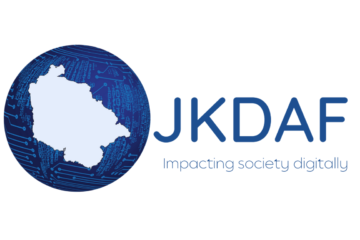There are several factors that play a role in finding a sustainable business idea. Here we explain why understanding industry saturation is a critical factor in creating perpetual business ventures.
By Faisal Kawoosa, Chief Analyst & Founder Techarc (Founder Mentor and Convenor, JKDAF)
The startup wave has just begun in the UT of Jammu & Kashmir. Propelled by changed socio-economic scenario and the very enabling industry friendly environment nurtured by the government by bringing in one of the best industrial policies inter-alia startup policies, available in India that not only adequately takes care of the inherent industrial disadvantages faced by J&K due to several legacy factors, but also gives the launchpad to create, sustain and grow businesses in contemporary competitive times.
Undoubtedly this is the best time to business in J&K! However, this is only from the facilitation point of view. The primary onus of establishing a successful venture still lies with the entrepreneur. So, for understanding the policy and regulatory framework, economic conditions, social setup, political scenario, consumer preferences, etc., it is very important that the entrepreneur does the homework properly. This is where help and assistance of various institutions and departments setup by the government to promote and facilitate industry, trade and commerce in the UT can be sought. Apart from that, synchronisation with trade bodies and industry associations is also important. Engaging with the startup ecosystem including incubators, JKEDI, etc., is also beneficial. Other than this, the entrepreneur must also engage with consultants who have the data and facts about various industries basis their ongoing engagements and time to time studies and assessments they make.

There are several triggers that attract someone towards entrepreneurship. Someone could be an inventor or an innovator, understands the business value of the same and is encouraged to foray into entrepreneurship. Likewise, someone having deep subject expertise would want to leverage it for a business opportunity. Similarly, someone could have spent considerable amount of time in a professional corporate activity and would want to capitalise on that. Despite these entrepreneur profiles having a strong distinctive and defensible business idea, they would still need to test the market before making a decision to commit to the idea.
However, this set of entrepreneurs is always a niche. It does not mean others cannot venture out. Most of the people, especially young sprouting talent who would have just come out of colleges and universities or are still pursuing their education want to try out basis their zeal along with some level of ideation in their mind. Some also go by looking around in their social circles. This thumb rule approach does not necessarily work out.
There are several factors that could lead to failure or sickness of such an entrepreneurial endeavour. One of the major factors ignored is the saturation level of the industry. Saturation simply means the headroom that’s still available in terms of filling up the demand. If the startup is adding to the supply of a product or good where the demand is still to be met, there are high chances of the venture becoming successful. Otherwise, the new player would only overcapacity the supply not only risking the business but also causing a turbulence in the industry causing inventory pileup, downward trend in prices, etc.
When a person or a group of people intent to become entrepreneurs and startup, of course they must align many things. These are combination of personal attributes, professional competence and capability mapping from individual standpoint. At the same time, there is a thorough exercise required to evaluate external factors that have a direct or indirect impact on the business.
One of the key exercises that every entrepreneur must do is to understand the present size of the market, velocity of growth and how big it can become in future. This is something where we see many of the business ideas and pitches weak. While the idea might be a great one, but its not linked with the potential. As a result, there is not enough of tangible understanding of what is the present target it should aim for and how big can it grow in future.
This is where market sizing exercise becomes essential before deciding about pursuing an idea. The commercial viability of an idea can only be understood after it. Also, the entrepreneur can define tangible goals and objectives that are quantified. To achieve these goals, it can then map the resources required and ‘hunt’ for them to set in action the plan.
It is the market sizing activity that gives us an understanding of saturation level of business. At the same time, the overarching market research efforts give us invaluable insights into changing consumer behaviour, that also defines the market opportunity. For instance, while the market size might look very promising, the changing consumer behaviour as a result of preference towards substitutes and alternatives also has a bearing on the realistic opportunity size.
It is for every entrepreneur to conduct a proper market research and sizing activity before deciding the business to be pursued. That will bring in a lot of objectivity in goals and help in prioritising the resource mobilisation. There is no denying that execution is key to success, but how and when to turn the key is what market research and sizing will help to understand.
These all evaluations form part of what we technically call feasibility analysis. Every entrepreneur needs to do this analysis to understand the potential and longevity of the industry or sector under consideration. That will be the first step among many others towards finding out a sustainable business idea that has less chances of failure in the journey of starting up.
